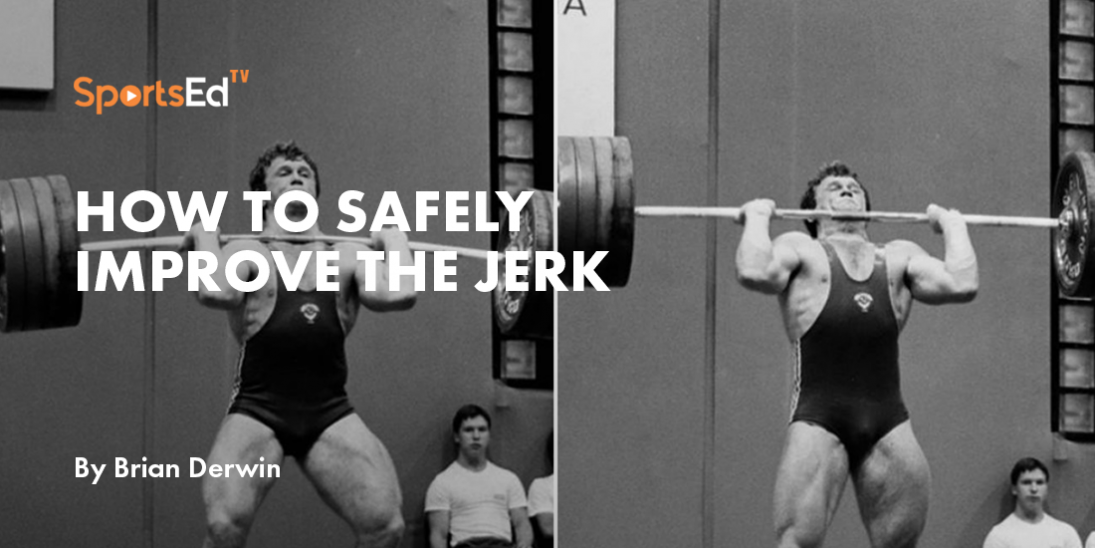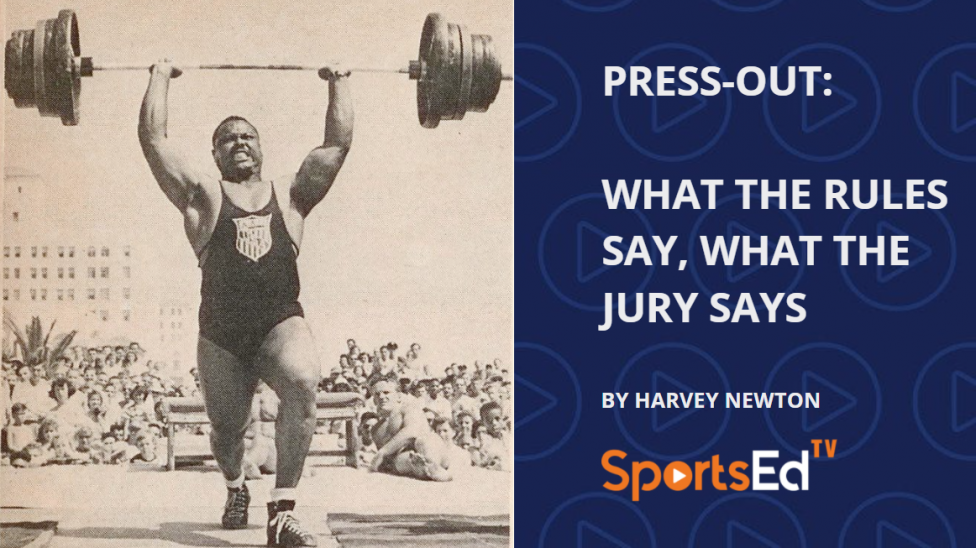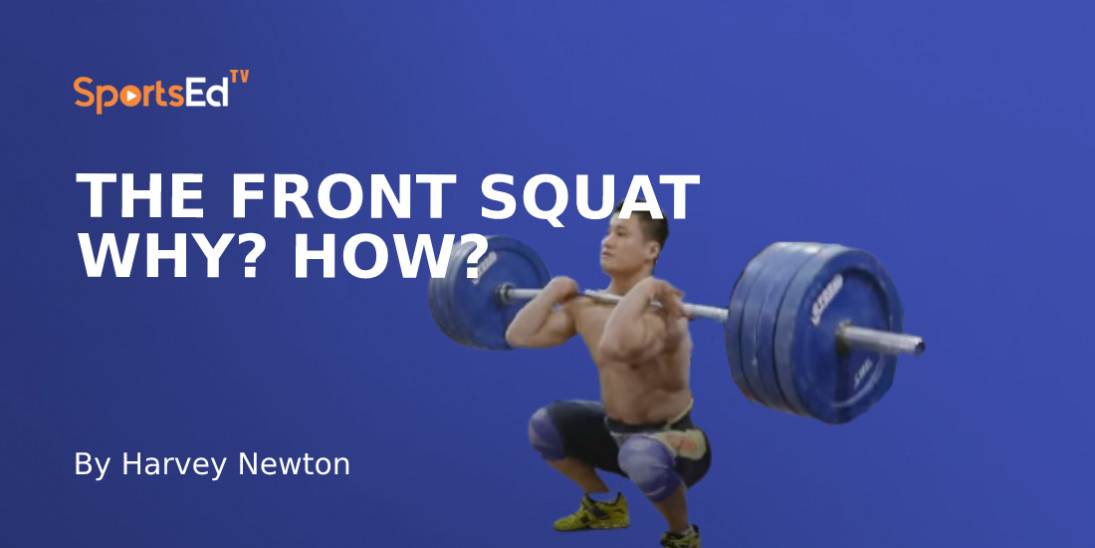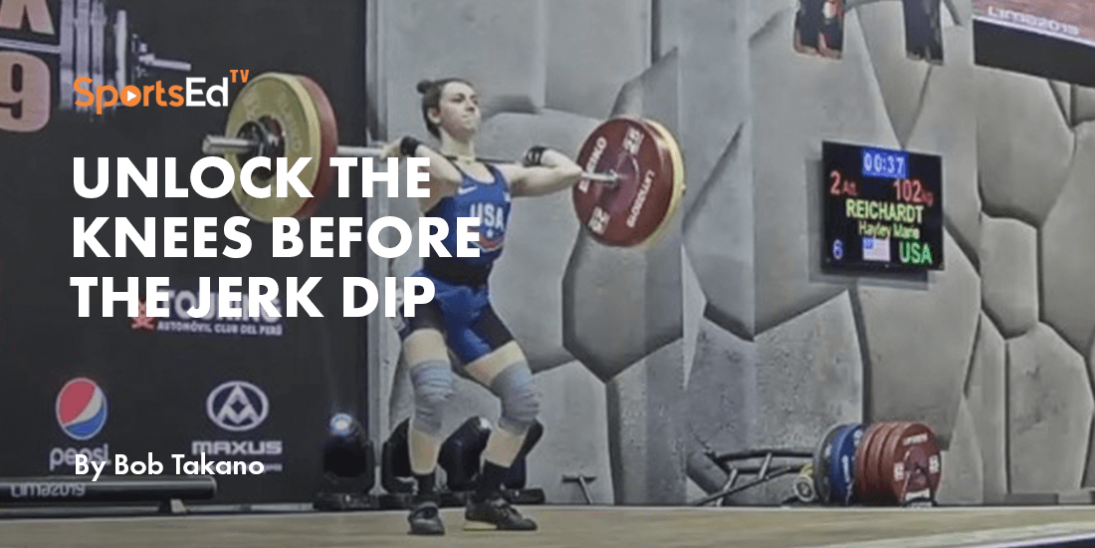Weightlifting
Welcome and thanks for visiting...

Fixing the Clean Start
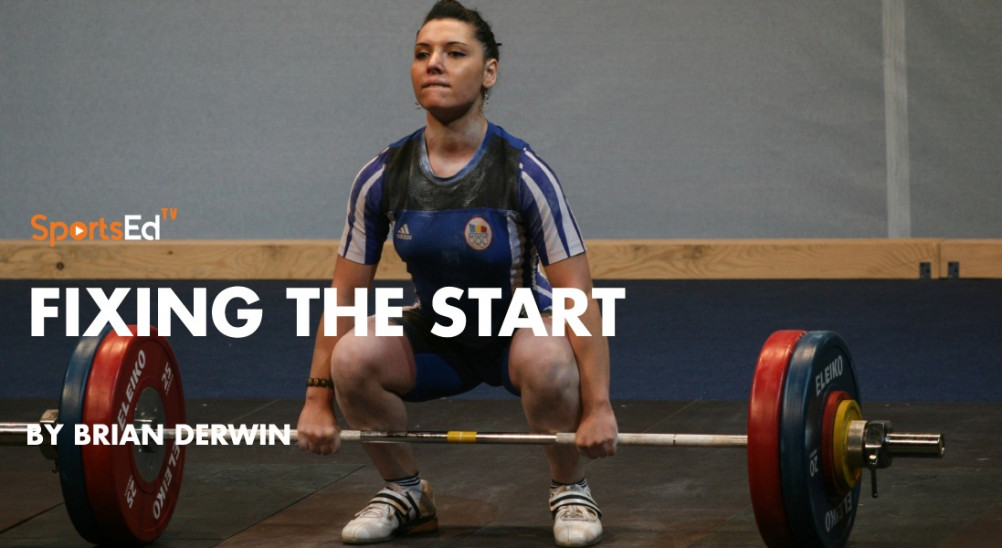
Two things prompted this topic. We had an athlete that had never practiced weightlifting, yet he showed awesome speed. Unfortunately, he exhibited poor positioning. Additionally, this flaw is near and dear to me, since I had to resolve this same situation when I was an active lifter.
Check out the SportsEdTV weightlifting library in order to see the details Coach Derwin describes within this blog (Note Steps #1 and #2).
This lifter’s starting position (Photo 1) initially looks good. Note that with the barbell on the platform the set-up looks great, with his back angle at about 45 degrees, the back flat, and the shoulders over the bar.
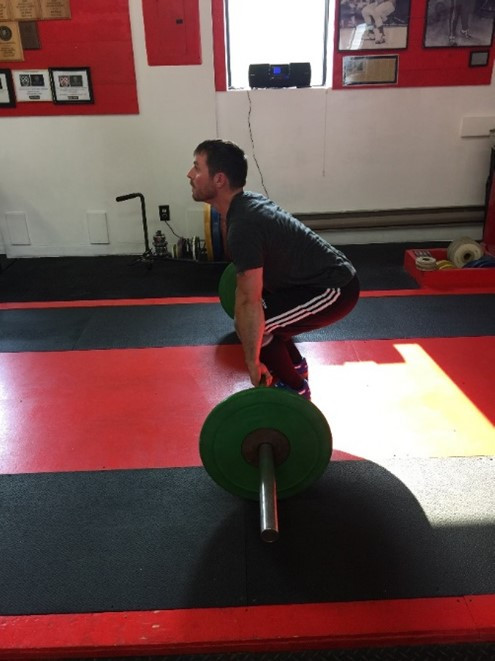
Photo 2 shows the lifter and the barbell during the lift-off portion of the pull. As soon as the lift starts his hips rise too far, too fast. Note that the hips here are too high, something that gets worse as the lift progresses.
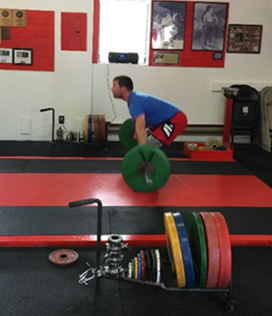
Correcting The Flaw
I use two exercises to address the proper movement at the start. I find the most effective exercise is doing lift-offs while on a high rise, or elevated surface. Done properly, this exercise causes an exaggerated starting position that recruits the legs as the prime movers. Done properly, this can correct the problem of the hips rising too high, too soon.
Starts (Lift-offs) from the High Rise
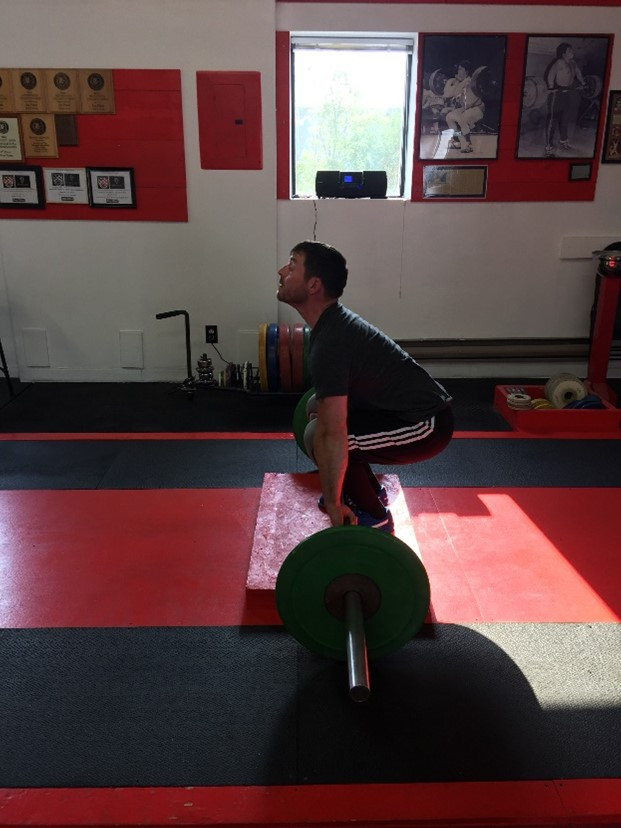
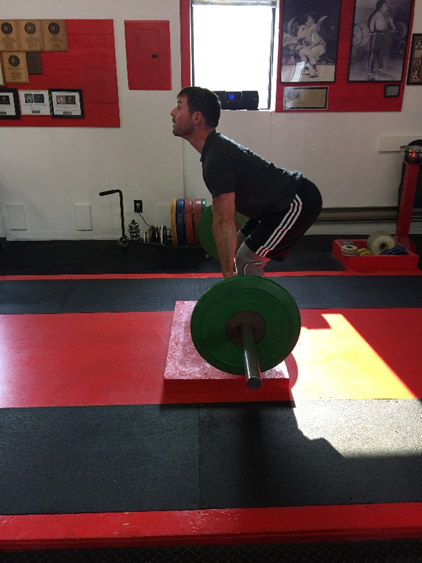
Note how the shoulders and hips now rise at about the same rate, the ultimate target for correcting this flaw.
We aim for weights approximately 90%. Over time, this can increase to 110% - 115% of their best clean. Once a lifter masters the high rise lift-off version, we then return to the standard floor version.
Start (Lift-offs) from the Floor
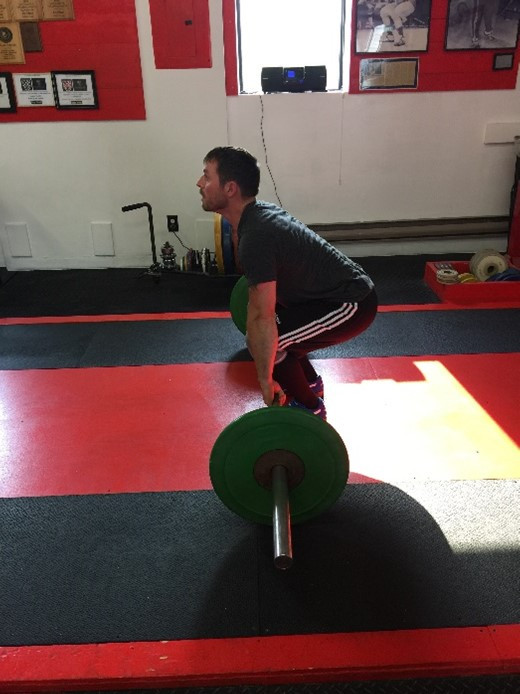

The above photos show the standard lift-off performed properly, with the shoulders and hips rising at about the same rate. Now we can regularly drill the standard clean pull. In both cases (high rise and regular) the athlete brings the bar back and up using all three angles (ankles, hips, and knees). I have lifters hold the barbell at the low hang position just below the knees for a three-second count and then the weights are lowered like a “reverse video” to reinforce the movement.
I have found that if the positions are correct from the floor to the low hang position, the rest of the lift is usually performed properly. This is an easy way to correct an otherwise common mistake of raising the hips too quickly that often causes a missed lift.

